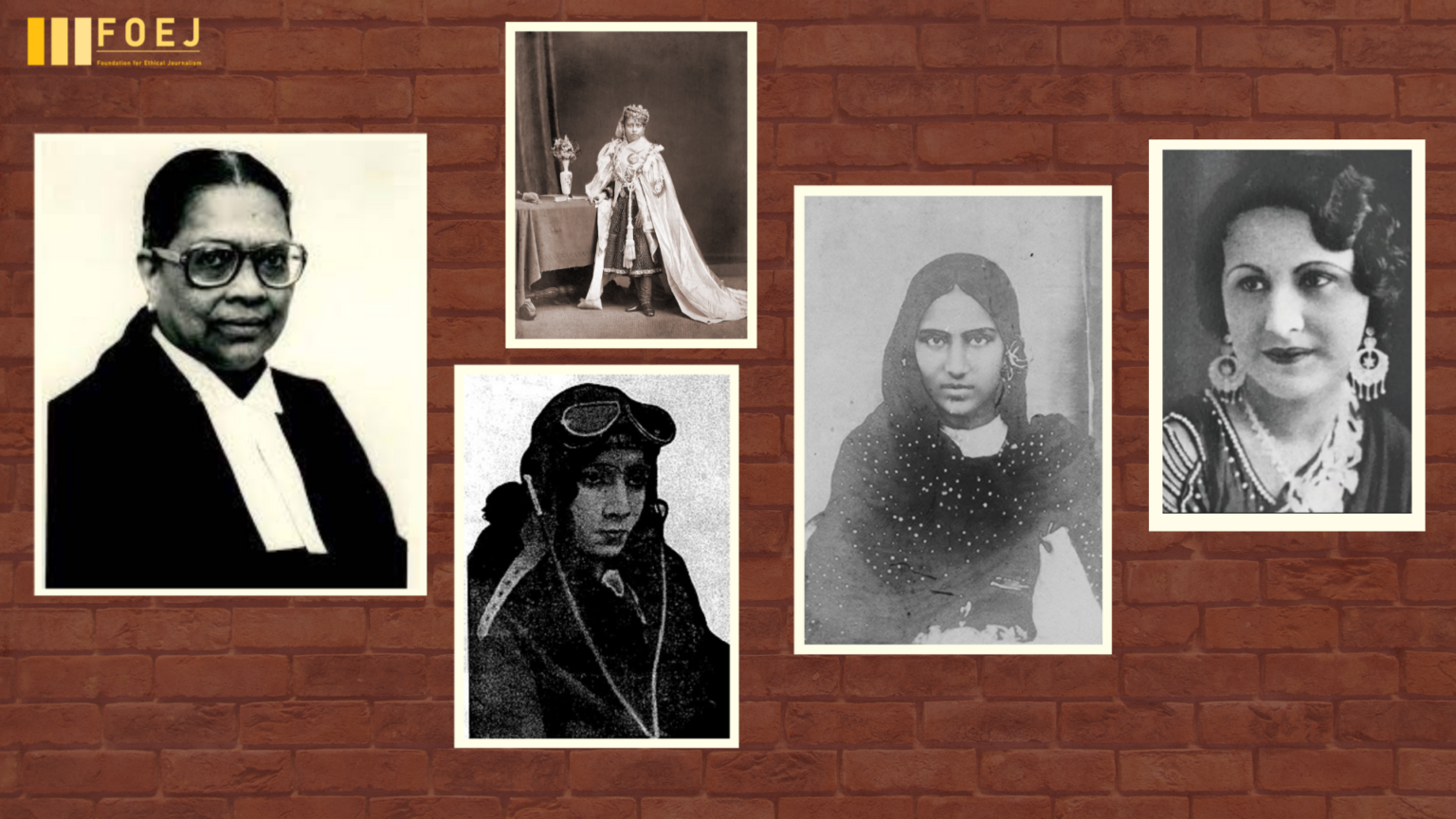Patriarchy – one of the menaces that has been responsible for cloaking the rational world through irrational means, always prevailed in Indian society. Especially, among Muslim population, the hold of patriarchal mindset is firm and continues to clog the rational thinking.
Despite this, Indian Muslim women have risen to tremendous heights and accomplished things that no one could think of.
In this article, we will be remarking some of these great Indian Muslim women who have marked their existence through innumerable credits.
Sultan Jahan Begum

Hajjah Sultan Jahan Begum was born on July 9, 1858 in the city of Bhopal. She was the only surviving child of Begum Sultan Shah Jahan and General Nasir-ud-Daula.
She secured the throne after her mother’s death in 1901 and continued to rule till 1926.
Sultan Jahan followed the steps of her mother and grandmother and introduced numerous reforms especially in the education system.
In the year 1918, she founded several popular educational institutions in Bhopal and started free and compulsory education. She paid interest in the promulgation of education to each and every section of the society with special attention towards the female population. Besides this, she also built other technical colleges for the flourishing of technology. She also served as the Chancellor of Aligarh Muslim University from 1920 till her death in 1930.
Major reforms were made by her in the areas of taxation, police, army and judiciary also. These reforms extensively increased the development in the region and served as a wheel for rendering justice through justifiable means.
In the year 1922, Begum Sultan Jahan established an Executive and Legislative State Council and open elections for the municipalities began.
In the year 1914, Sultan Jahan served as the President of the All India Muslim Ladies Association. She was also a pioneer in the fields of inoculation and vaccination campaigns, and she worked tirelessly to promote cleanliness, hygiene, and sanitation.
Not only that, she has many books under her name including Hidayat uz-Zaujan, Sabil ul-Jinan, Tandurusti and Hidayat Timardari.
Fatima Bibi

Fathima Beevi was born on April 30, 1927 at Pathanamthitta, the then Kingdom of Travancore.
She had an impeccable personality ever since she was a student, and in 1950, she aced the Bar Council examination and began her professional life in the lower judiciary.
In 1958, she was promoted to the position of Munsiff in the subordinate Judicial Services of Kerala, and then in 1968, she was promoted to the position of subordinate Judge. She was appointed to the position of Chief Judicial Magistrate in 1972, and then to the position of District and Sessions Judge in 1974.
Her achievements didn’t stop here only and in 1980 she was appointed the Judicial Member of the Income Tax Appellate Tribunal and further elevated to the High Court as a Judge in 1983.
After another year, she was appointed as a permanent judge on the High Court, a position she held until her retirement in 1989.
But in 1989, she was appointed as the judge of the Supreme Court, which made her the first female to be appointed as the judge of the Supreme Court and the first Muslim woman to make her mark on the highest authorities. She was also the first judge to preside over a Muslim majority court.
Hijab Imtiaz Ali

Hijab had assimilated numerous appreciation and achievements under her name for his work in Urdu romanticism besides featuring women, nature and psychology. Her writing career spans over 60 years. Her stories were published by two popular magazines of the era, namely Tehzeeb-e-Nizwaan and Phool.
One interesting and mind boggling fact about Hijab Imtiaz is that she was passionate about flying since childhood and so in alignment with her passion, she enrolled in the Lahore Flying Club and got her pilot’s license in 1936.
In 1939, Hijab became the first Muslim woman in the British Empire to obtain an ‘A’ license as an air pilot.
Muhammadi Begam

Sayyidha Muhammadi Begum was born on May 22, 1878 in Shahpur, Punjab. She was one of those Muslim women who attained great heights through emphasising on women education and emancipation which led to the contribution of great appreciation. Apart from being an advocate of women education, Muhammadi Begum was a Sunni Muslim scholar and Urdu writer.
Sayyidah Muhammadi Begum married Sayyid Mumtaz Ali Deobandi in 1897 from whom she learned Arabic and Persian.
In 1898, Muhammadi Begum co-founded a weekly magazine for women called Tehzeeb-e-Niswan with her husband. The magazine is considered to be one of the most famous work on women rights in Islam. She was hailed as India’s first Muslim feminist woman and the first woman who ever edited an Urdu magazine.
Fatma Begam

Fatma Begum was born in 1892 and is associated with the title of first female film director of India. Besides being a director, she was also an actress, producer and screenwriter.
After beginning her career as a performer on the Urdu stage, Fatma eventually transitioned to films and made her debut in the silent film Veer Abhimanyu, which was directed by Ardeshir Irani and released in the year 1922.
In 1926, she established the foundation Fatima films that later was known as Victoria-Fatma Films, and went on to achieve widespread recognition in 1928. She was a trailblazer in the field of fantasy cinema and was an early adopter of the use of trick photography to have special effects.
Fatma Begum became the first female director of Indian cinema with her film Bulbul-e-Paristan in 1926. Fatma also worked for Kohinoor & Imperial Studios.
We hope you found our compilation of the numerous achievements of Indian Muslim women throughout history to be interesting. We strongly advise you to conduct your own research to learn more about them.









